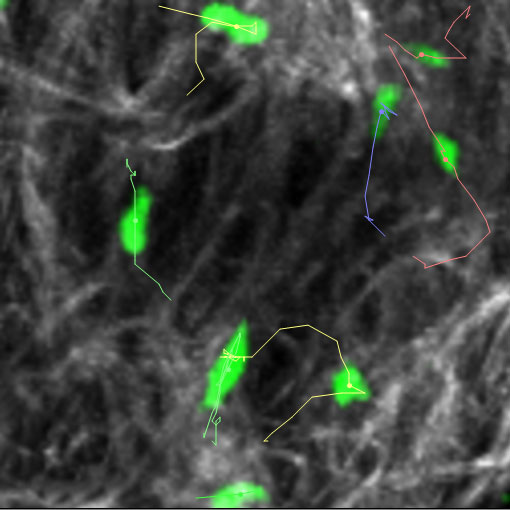URMC / Labs / Fowell Lab / Projects / CD4 T Cell Motility in Inflamed Tissue
CD4 T Cell Motility in Inflamed Tissue
Cell migration is determined by the cell-intrinsic machinery for motility such as integrins, actin regulators and chemokine receptors and by the extrinsic composition of the extracellular matrix. The way in which effector CD4 T cells navigate through inflamed interstitial tissue at sites of infection is not well understood. We are using imaging techniques to define the molecular requirements for interstitial movement focusing on the role of integrins and their interaction with distinct matrix components. We predict that the density and composition of matrix will be modified by different types of inflammation and will dictate the migratory machinery required by the incoming effector T cells.

Effector helper T cells migrating through collagen (grey) in the inflamed ear dermis
Using intra-vital 2-photon microscopy we have already revealed interesting differences between Th1 and Th2 cells in the mode of motility in inflamed tissue. We are currently dissecting whether the differences in movement are driven by intrinsic differences in the cells themselves or the type of inflammation in the tissue.